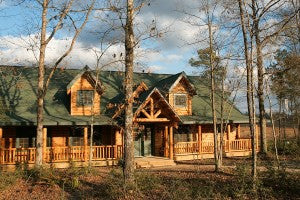5 More Myths About Log Homes

Don’t let these myths, often perpetuated by well-meaning friends and relatives, dissuade you from living in a log home. They might think they have your best interest in mind, but it’s best not to listen to someone who hasn’t actually lived in a log home. Someone who has will confirm that the following five issues are indeed, myths.
1. Log homes are not energy efficient
Assuming the log home is well designed and of quality construction by a contractor who knows what they are doing, this is not true. The tightness with which a log home is built can be a more significant determination of energy efficiency than just the “R” factor recognized by most construction codes. Log homes are generally much tighter than its stud framed counterpart, making them extremely energy efficient. There’s a reason that log homes are still built in the coldest climates like Alaska and Canada.
2. Termites and other wood boring insects will be attracted to wood homes
Termites eat wood, so it makes sense that they'd be more attracted to a home made of it, right? There are multiple factors besides simply the presence of wood. though. With the proper preparation and maintenance, insects will not be more attracted to a log home than any other kind of home that has wood in it.
3. Log homes are more expensive than a conventional home
This one is completely relative and hard to compare apples to apples. The material for a log home might cost more than the cheap 2x4s and vinyl siding of a “conventional” home, but the walls of a log home go up much faster, which saves labor cost. And what is a conventional home anyway? There are many types of construction so it is hard to compare. Money is saved in a log home by not having to finish the interior so much. Drywall or wood paneling is not required, so the money saved can be invested elsewhere such as upgraded windows, appliances or whatever your heart fancies.
4. Log homes are a fire hazard
If you think this one through, it does not make sense. Large logs like the ones used in the walls of a log home do not spontaneously burst into flames when they come in touch with a fire source. The mass of the logs keeps them from easily catching on fire. Furthermore, when a frame house burns, a chimney is formed in the walls and the fire spreads quite rapidly. This does not happen with a log home. In fact, the walls are the last part of the structure to go if a log home catches on fire. The roof and the subfloor are more likely to burn first.
5. Insurance rates are higher for log homes
Log home owners do not have a more difficult time getting insurance than any other home owner. It varies from insurer to insurer, but insurance is widely available for log homes.
So if you’ve been considering a log home, rest assured that the benefits are many, and the drawbacks are few. And always be wary of the advice you receive from people who have not lived in a log home themselves.
